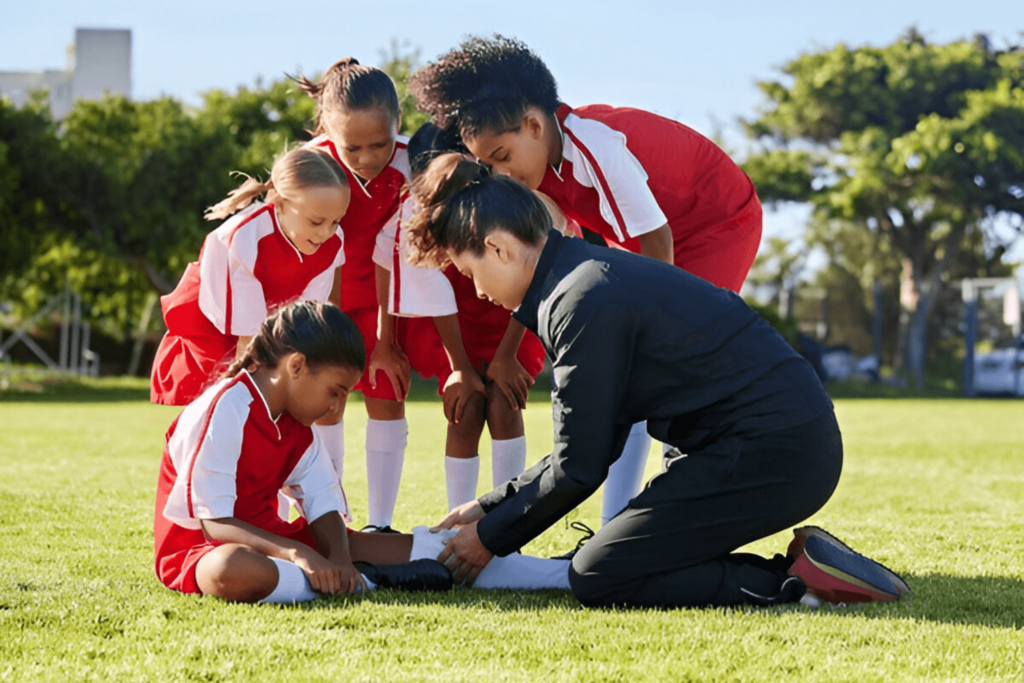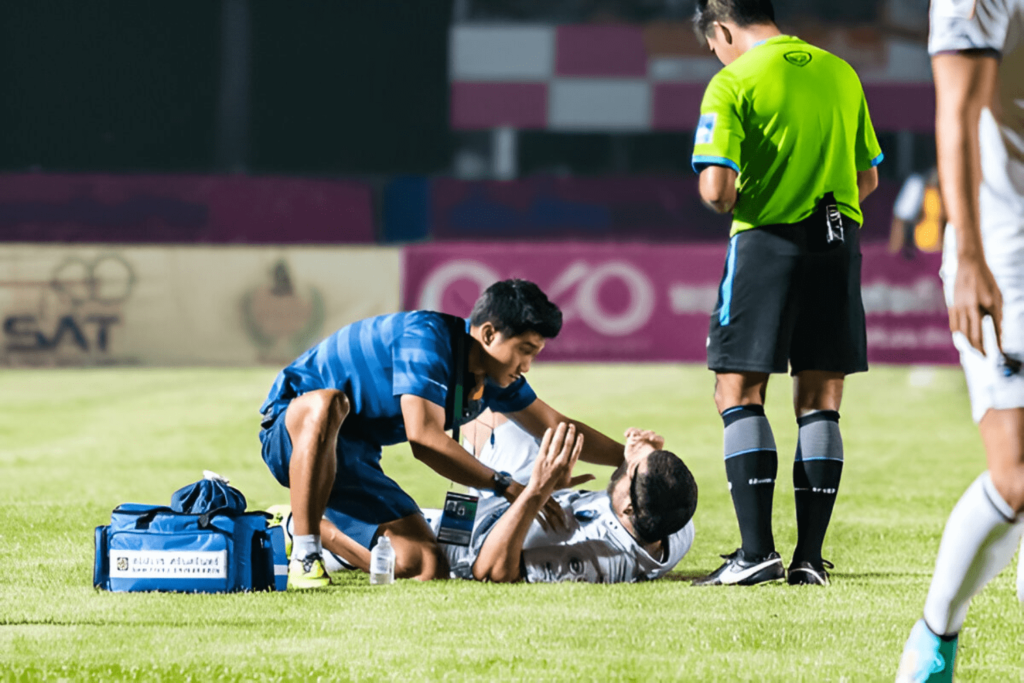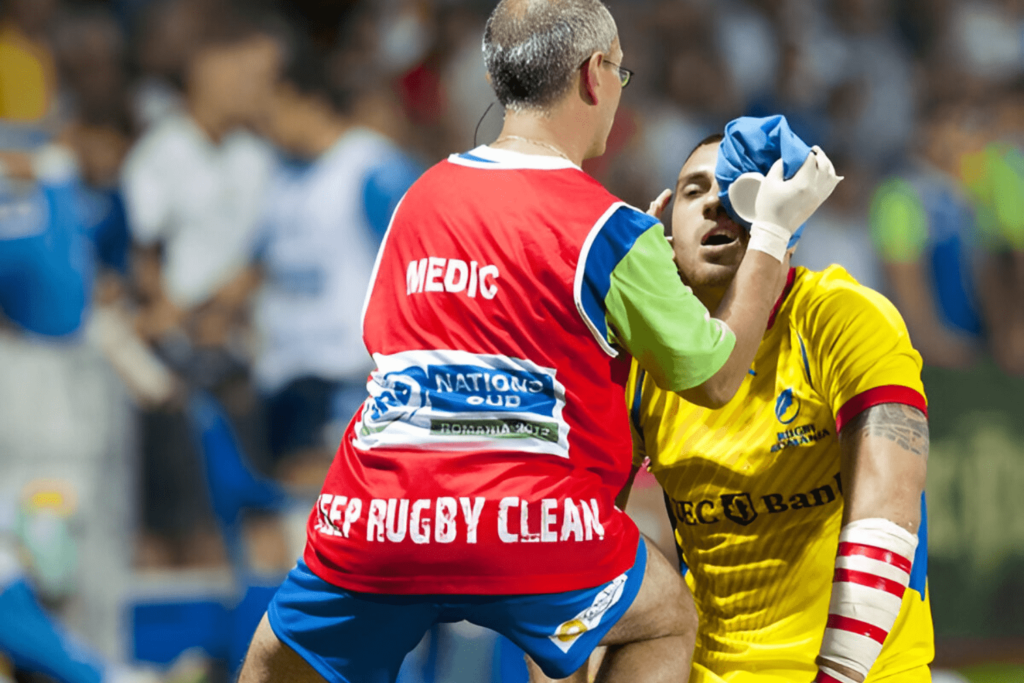Sports injuries can strike when you least expect them—during a sudden fall, an unexpected twist, or a hard tackle. How you respond in those first few moments can play a pivotal role in the outcome of the injury. But even well-meaning coaches, teammates, or bystanders can make mistakes when providing first aid on the field. These mistakes, though made with good intentions, can sometimes worsen the injury or delay recovery. In this post, we’ll highlight some of the most common errors people make when responding to sports injuries and offer insights on how to avoid them, ensuring the athlete gets the care they need right away.


One of the most frequent errors people make is downplaying the injury. It’s easy to assume that because an athlete can walk off the field or doesn’t appear to be in immediate distress, the injury isn’t serious. However, some injuries, like sprains, strains, and even fractures, might not be obvious at first. Athletes often push through pain, especially in the heat of the game, and it can take time for the full extent of the injury to show.
If an athlete gets injured, don’t rely solely on their ability to move or walk. Always take the injury seriously. Whether the injury seems minor or not, it’s important to stop play immediately, assess the situation, and give the athlete time to cool down and evaluate the injury further. Even if they seem okay at first, it’s crucial to take precautions and avoid allowing them to continue playing until a proper evaluation is done.
Applying ice to an injury is one of the most effective immediate treatments, yet many people wait too long to apply it. Ice helps reduce swelling and numb pain, but its benefits are time-sensitive. The sooner it’s applied after the injury occurs, the more effective it will be in controlling inflammation and discomfort.
After an injury, apply ice wrapped in a cloth or towel to the affected area as quickly as possible. Keep the ice on for around 15 to 20 minutes at a time. Don’t apply ice directly to the skin, as it can cause frostbite. Ice not only helps to reduce swelling but can also provide much-needed pain relief in the crucial moments following the injury.


A common mistake people make after an injury is rushing to move the athlete off the field. While the instinct may be to get them out of the way quickly, doing so can cause further harm, especially if the injury is serious. For example, if the injury involves the head, neck, or spine, improper movement could worsen the injury and potentially lead to long-term damage.
If you suspect an injury to the neck, back, or head, it’s critical not to move the athlete unless absolutely necessary. Instead, stabilize the area and wait for professional medical personnel to assess the situation. For less serious injuries, encourage the athlete to rest before attempting to move them to ensure they’re not putting unnecessary strain on the injury. Always take the time to evaluate the situation and avoid rushing any movements that might worsen the injury.


Sometimes, athletes or those helping with first aid may feel that an injury is too minor to require medical attention. They may choose to “wait and see” rather than seeking help. However, this approach can often make matters worse. What seems like a simple sprain could turn out to be a more severe tear, or a minor knock to the head could indicate a concussion.
Regardless of how “minor” an injury appears, it’s always a good idea to consult with a medical professional. They are trained to identify underlying issues that may not be immediately obvious. Even if the injury doesn’t seem serious, seeking professional advice can help ensure that the athlete receives the correct care and that no long-term damage occurs.
When wrapping an injury like an ankle sprain, there’s a delicate balance between providing support and restricting blood flow. Some people tend to wrap injuries too tightly, thinking that it will offer more support, but this can cut off circulation and make the injury worse. On the other hand, wrapping an injury too loosely means it won’t provide the necessary support to reduce swelling or keep the area stable.
When wrapping an injury, aim for a snug fit, but not so tight that it cuts off circulation. You should be able to fit one finger between the wrap and the skin. Always check the wrapped area regularly for signs of swelling or discomfort, as this could indicate that the wrap is too tight. Properly supporting the injury in the early stages can prevent further strain and promote a quicker recovery.
Concussions are one of the most serious injuries in sports, and their symptoms aren’t always immediately visible. An athlete might appear fine after taking a blow to the head, but symptoms of a concussion, such as dizziness, nausea, or confusion, could appear hours later. Some athletes may even continue to play, unaware that they have suffered a concussion.
If there’s any suspicion of a concussion, remove the athlete from the game immediately. Allowing them to continue playing increases the risk of further damage to the brain. After a concussion, an athlete should not return to play until they have been properly evaluated by a medical professional. It’s essential to take these injuries seriously, as repeated concussions can lead to long-term cognitive and neurological issues.
Another mistake people often make is trying to diagnose the injury on their own. While you might think you know what’s wrong, diagnosing injuries can be tricky, and making assumptions can lead to further complications. For example, what seems like a simple ankle sprain could actually be a fracture, or what feels like a muscle strain might be a ligament tear.
Instead of trying to self-diagnose, focus on managing the injury by following standard first-aid procedures like applying ice, immobilizing the area, and keeping the athlete calm. Once the immediate first aid steps are taken, make sure the athlete gets proper medical attention as soon as possible. A trained professional will be able to assess the injury more accurately and recommend the correct course of action.
When an athlete is injured, they might feel anxious or stressed, especially if they’re in pain. This stress can make the situation worse, both physically and mentally. By remaining calm and providing reassurance, you can help the athlete feel more at ease and reduce their anxiety, which can also help prevent further harm.
In these situations, it’s essential to communicate calmly with the injured athlete. Reassure them that help is on the way and encourage them to take slow, deep breaths. A calm environment not only helps the injured athlete but also allows those around them to stay composed and focused on the task at hand.
When an injury occurs on the field, responding quickly and effectively is essential to ensuring the best possible outcome for the athlete. By avoiding these common first-aid mistakes—such as ignoring the injury’s severity, delaying ice application, or moving the athlete too quickly—you can significantly improve the chances of a full recovery. Always err on the side of caution, stay calm, and remember that seeking professional medical help, even for seemingly minor injuries, is key. In the fast-paced world of sports, taking the right first-aid steps can make all the difference in an athlete’s recovery journey.
Elevate your performance with Apex Sports Clinic! Schedule an appointment today for personalized, expert care in optimizing your athletic potential.


